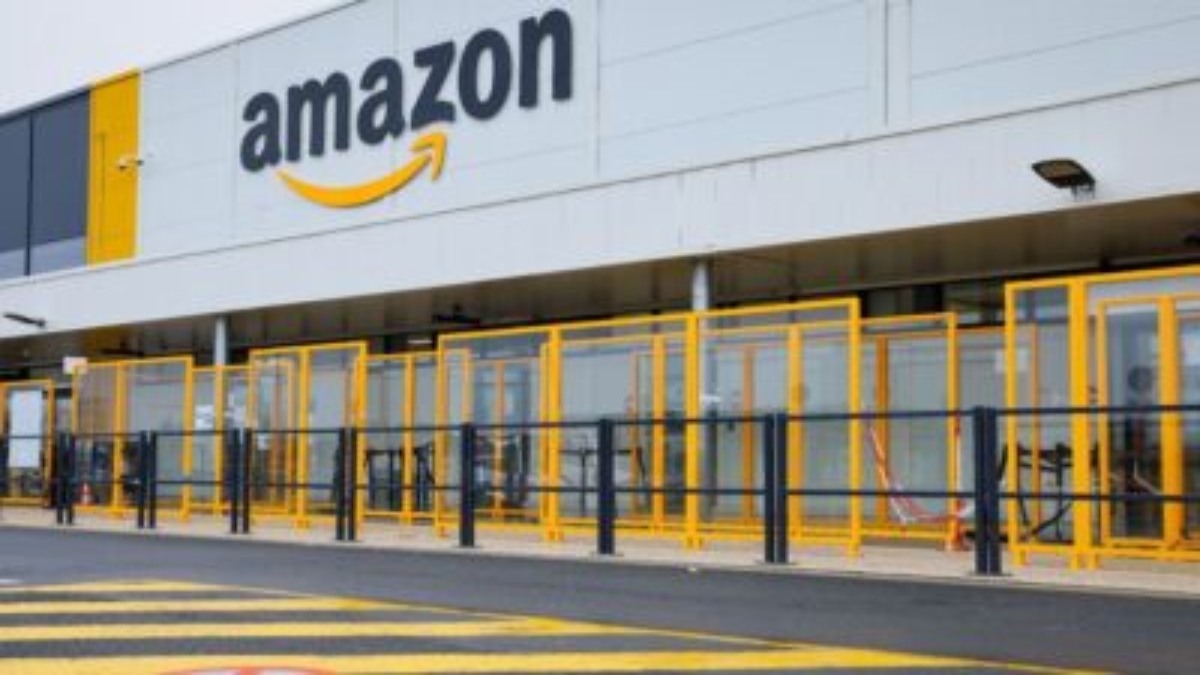Business
Navigating your course with ease by utilizing Truck Stops Finder to identify Truck Stops along your path
Are you seeking out truck stops along your route? Look no further than our Truck Stops Finder! Our Truckslife platform is the ideal location to find truck stops throughout the UK. It not only provides an exhaustive list of locations, but also all pertinent details about each one – making it easy for travellers to locate them with ease! It automatically records your location when searching so all that’s left is selecting and viewing a list of truck stations nearby!
Be at ease and maximise the value of our Truck Stops Finder today!
The highly regarded Truck Stops Finder, developed by Truckslife features up-to-date details and displays all of the necessary amenities for hundreds of UK Truck Stops. The data provided for each location is vast; encompassing its Address, Phone Number, Parking Fees and Capabilities as well as Cafes’ opening hours. Additionally, there’s also a Map so that you can conveniently pinpoint your route! Be assured, our Truck Stops Finder will pinpoint a truck stop near your location and display the distance via map with directions to reach it. Whatever Truck Stop services you are searching for, such as washrooms or restaurants – you can be confident of finding them all in our tool!
Find Truck Stops near me with Truck Stops Finder:
Truck drivers are well aware of the significance of locating a suitable truck stop during their journey. After all, it is where they will be expending an extensive amount of time! This is why our Truck Stops Finder can be a tremendous asset to such individuals; allowing them to quickly find ideal locations that suit their needs—be it high-quality amenities, cost-effective pricing or preferred locales! It takes only mere seconds for users to generate lists featuring destinations close by as well as along one’s route – ensuring optimal efficiency and convenience in any situation. Don’t delay any longer in your search for truck stops that adequately meet your needs. Quickly, why don’t you give the Truck Stops Finder a shot? We can be of assistance as we navigate this life on the road together!
How does Truck Stops Finder function?
The process of sourcing a truck stop can be daunting! Our Truck Stops Finder makes it easy for you to find nearby facilities, no matter where you reside within the UK. Your current locality is automatically populated in our app or if else desired, could be altered by specifying a Distance range. This enables users to search only those locations that fall within their preferred parameters!
Moreover, by linking to Google Maps we can provide you with information about the Truck Stops and provide directions. Whether seeking a place to eat or restful respite – our truck stops locator can assist you in locating what you need!
Benefits of Using our Truck Stops Finder:
There are several advantages of utilizing a Truck Stops Finder during your carrier journey. From increased productivity to enhanced security, here are some primary benefits associated with this resource:
- Save Money
Searching for the best truck stops in the UK can be a gruelling task, but Truck Stops Finder is here to alleviate that burden by providing users with current and up-to-date information pertaining to those establishments. Not only will it help you discover locations offering reasonable prices; it will even help navigate through any available discounts!
- Avoid Accidents
For drivers who are feeling fatigued, the ideal solution is to locate nearby truck stops using our Truck Stop Finder so that they can catch a well-deserved snooze before setting off once again. This strategy avoids potentially life-threatening incidents on their journey and saves precious time for them!
- Find Facilities
With Truck Stops Finder, users are afforded an intuitive way to locate all of the Truck Stop Facilities in their vicinity.
- Find Fuel Cards
Truck Stops Finder displays all Fuel Cards that each Truck Stop accepts.
- Plan Truck Stop Route
With Truck Stops confidently marked on your route and spotless mapping, Truck Stop Finder can aid you in locating the ideal pit stop destination as well as assist in steering clear of congested traffic. This will help slash fuel expenses while minimizing travel time.
Navigating the trucking industry can be a taxing task, especially if you’re seeking out one of the nearest options for refuelling or procuring an amenity. Fortunately, Truckslife has developed an all-inclusive platform to make your search simple and expedient – the Truck Stop Finder!
Discover the perfect Truck Stops Finder today and experience how simple it is to locate the ideal truck stop for your requirements.
Frequently Asked Questions
What is Truck Stops Finder?
Truckslife’s Truck Stops Finder is a facility under Truckslife web-based system or APP that offers assistance for drivers in locating truck stops and other services along their routes. With this resource, you have access to an extensive list of locations across the UK!
What information does Truck Stop Checker provide?
Truck Stops Finder provides the location and hours of operation for truck stops along a driver’s route as well as providing pertinent information about each establishment’s pricing policy and other amenities provided.
How do I use Truck Stops Finder?
Using our truck stops finder is very easy. The Truckers Location is automatically loaded, so all that is needed is to select Search. A list of truck stops with all key information and Maps will be displayed for the user to select to get directions or phone to reserve a parking space or route. All Truck Stop facilities and location information will be displayed, including open and close timings, costs and spaces, fuel cards, and more.
Why does Truck Stops Finder hold such significance for truck drivers?
For truck drivers, the critical aspect of utilizing Finder is locating truck stops and other amenities along their route. This particular application provides an optimal solution in helping drivers choose a suitable one that meets their needs – all in an effort to increase efficiency and enhance productivity.
Business
How to Find the Best Deals on Second-Hand Mobiles Through Online Shopping

Buying a second-hand mobile is a smart choice, especially when you’re looking for a high-quality phone at an affordable price. But where do you find the best deals, and how can you ensure you’re getting a reliable device? Here are some tips to help you find the perfect second-hand mobile online.
1. Choose Trusted Online Marketplaces
To get a good deal on a second-hand mobile, start by browsing trusted platforms that specialize in refurbished or used devices. Some popular options include:
- eBay: Known for its wide range of sellers and products, including second-hand phones.
- Swappa: Focused on selling used phones directly from users, with a detailed vetting process.
- Amazon Renewed: Offers certified refurbished phones, often with warranties.
- Facebook Marketplace: A local option to find used mobiles nearby for direct exchanges.
These platforms provide a range of options, so you can compare prices, check seller reviews, and find the best deals.
2. Set a Budget and Stick to It
It’s easy to get carried away when shopping online, especially when you see premium models at discounted rates. To avoid overspending, set a clear budget for yourself before you begin your search. Make sure to consider additional costs like shipping and taxes.
3. Compare Prices Across Different Sellers
One of the best strategies for finding a great deal is comparing prices across multiple sellers. Don’t just settle for the first listing you find. Use comparison tools or manually browse various sellers on platforms like eBay or Swappa to see if there’s a better offer elsewhere.
4. Check for Warranty and Return Policies
When purchasing a second-hand mobile, it’s essential to look for listings that come with a warranty or return policy. Many platforms offer refurbished phones with limited warranties, which can protect you if the phone stops working shortly after purchase. A good return policy also gives you peace of mind in case the product doesn’t meet your expectations.
5. Read Reviews and Seller Ratings
Before making a final purchase, always read customer reviews and check the seller’s ratings. Reliable platforms like eBay and Amazon provide detailed seller feedback, giving you insight into the quality of the product and the trustworthiness of the seller. Avoid sellers with low ratings or negative reviews to minimize the risk of a bad experience.
6. Consider the Phone’s Condition
Used phones are sold in varying conditions. Be sure to understand the condition of the phone you’re buying, whether it’s labeled as “Like New,” “Refurbished,” or “Used.” Phones that are “Like New” typically have minimal wear and tear, while “Refurbished” devices have undergone repairs to function like new. “Used” phones may have visible damage but still function well. Always read the product descriptions carefully to know what to expect.
7. Look for Discounts and Coupons
Many online platforms offer seasonal discounts, flash sales, or coupons that can help you save even more on your second-hand mobile. Keep an eye out for promotions, especially during Black Friday, Cyber Monday, or end-of-year sales. Websites like eBay and Amazon frequently run sales, so it’s worth waiting for the right deal.
8. Verify the Phone’s Specifications
When buying a second-hand mobile, make sure the phone meets your needs. Double-check specifications such as:
- Battery Life: Ensure it has good battery health, especially for older models.
- Storage Capacity: Choose a model with enough storage for your apps, photos, and media.
- Software Updates: Confirm whether the phone is capable of running the latest software.
- Unlocked or Carrier-Locked: If the phone is carrier-locked, make sure it’s compatible with your carrier.
Having a clear idea of what you need ensures that you won’t regret your purchase later.
9. Avoid Common Scams
Unfortunately, scams can be common in the world of second-hand mobile shopping. To avoid falling victim to fraudulent sellers, only purchase from reputable platforms with buyer protection policies. Always use secure payment methods, like PayPal, that offer additional security and dispute resolution in case something goes wrong.
10. Test the Phone Upon Arrival
Once your phone arrives, test it immediately to ensure everything works as expected. Check the touchscreen, cameras, speakers, buttons, and charging
port. If the device doesn’t function properly or has damage that wasn’t disclosed, contact the seller or platform’s customer support right away to initiate a return or exchange.
Conclusion
Finding the best deals on second hand mobile online shopping can save you a significant amount of money without sacrificing quality. By following these steps—choosing trusted platforms, comparing prices, and checking reviews—you can confidently make a purchase that fits your budget and meets your needs. Happy shopping!
Business
Mueller Settlement Amazon: Navigating the Legal Landscape

Learn more about the intricacies of the Mueller Settlement Amazon, the consequences for Amazon legally and how it affected the company’s image. Discover the background, the thoughts of experts, and the steps Amazon took to win back customer confidence. Learn all about this retail giant’s struggles, triumphs, and plans for the future.
Introduction
Much attention has been focused on the Mueller settlement with Amazon in the intricate e-commerce industry. This article examines the origins, legal ramifications, and influence on Amazon’s reputation of this deal, among other complexities.
Understanding Mueller Investigation
What is Mueller Settlement Amazon?
A number of Amazon’s business activities were the subject of the inquiry that led to the Mueller settlement. To fully realise the implications of the settlement, it is vital to understand where this inquiry came from.
Significance of the Settlement
Understanding the settlement’s utmost significance in the business realm requires delving into the conclusions of the Mueller investigation and Amazon’s participation.
Legal Implications
Mueller Report Overview
A synopsis of the Mueller report explains the complex legal landscape that Amazon faced. To grasp the seriousness of the settlement, it is necessary to unravel the main conclusions and what they mean.
Amazon’s Legal Responses
In responding to the claims made in the Mueller report, Amazon’s legal staff was helpful. In this part, we will take a look at the methods Amazon used to protect its interests.
Settlement Details
Terms and Conditions
To further understand what Amazon was required to do, it is helpful to review the settlement agreement’s terms and conditions. Understanding the breadth of the settlement requires uncovering the financial ramifications for Amazon.
Impact on Amazon’s Reputation
Public Perception
Public opinion may have just as much of an effect as a court of law. It is instructive to compare popular opinion of Amazon before, during, and after the settlement.
Media Coverage
The media’s coverage of the Mueller settlement was essential in establishing its narrative. The impact on Amazon’s reputation as a result of the media attention is examined in this section.
Amazon’s Response Strategy
Communication Tactics
It takes finesse to communicate at a settlement. To make sense of what happened next, you had to know how Amazon strategically conveyed its position.
Changes Post Settlement
After the payment, Amazon made certain adjustments to fix its reputation. Taking a look at these adjustments shows how seriously the organisation takes the idea of learning from the mistake.
Lessons Learned
Corporate Responsibility
Many people started talking about corporate accountability after the Mueller deal. In this part, we’ll look at what other companies, including Amazon, have learnt.
Future Implications for Companies
Companies may learn a lot about how to deal with future problems like this by looking at the bigger picture of how the settlement affected their actions.
Expert Opinions
Legal Experts’ Take
Views on the Mueller settlement were expressed by legal professionals. Gaining insight into their viewpoints enriches the examination.
Business Analysts’ Perspectives
Analysts from the business world provide light on the potential financial consequences. Gaining insight into their viewpoints allows for a more complete picture to be painted.
Mueller Settlement Amazon: A Timeline
Key Events
To make sense of what’s happening, it’s helpful to go over the major points of the Mueller deal in chronological order.
Milestones in the Settlement
Readers may easily follow the events that had place by locating key points in the settlement chronology.
Consumer Trust Regained
Measures Taken by Amazon
Amazon did some things to win back the confidence of its customers. By breaking down these steps, we can see how seriously the business takes its consumers’ needs.
Customer Feedback
It is critical to pay close attention to what customers have to say. To gauge the success of Amazon’s campaigns, it is helpful to examine consumer comments made after the settlement.
Positive Outcomes
Changes in Corporate Practices
As a result of the Mueller settlement, Amazon revised and updated certain of its business policies. Looking at these developments highlights the benefits of the settlement.
Industry-wide Impact
Beyond Amazon, the settlement’s effects were felt. The effects of the settlement on the industry as a whole are discussed in this section.
Challenges Faced
Internal Struggles
Both during and after the settlement, Amazon encountered difficulties internally. The larger story gains depth from an appreciation of these challenges.
External Backlash
Amazon faced criticism from other sources. Managing a company’s reputation after a settlement is complicated, but it becomes clearer when you look at the external issues.
Success Stories Post Settlement
Amazon’s Growth
The fact that Amazon has continued to grow since the settlement shows how resilient the corporation is. A positive outlook might be gained by delving into this growth tale.
Positive Repercussions
One way to look at the bright side of things is to consider the good things that have come out of the settlement.
The Future of Amazon
Sustainability Efforts
After the settlement, Amazon made sustainability an even bigger priority. By delving into these initiatives, we can better understand the firm’s dedication to ethical business practices.
Ongoing Commitment
The commitment of Amazon to learning from the settlement and making wise adjustments will determine its future.
Conclusion
Last but not least, the path to a Mueller deal with Amazon has been one of profound change. To better overcome obstacles, organisations would do well to understand the legal, reputational, and operational ramifications.
FAQs
Is the Mueller settlement a setback for Amazon’s growth?
Amazon overcame obstacles presented by the settlement and continued to develop as a result.
How did the public react to the settlement?
Both proponents and detractors of the idea voiced differing views in response to the public outcry.
Were there long-term consequences for Amazon?
Improvements in corporate responsibility and shifts in business practices were among the long-term effects.
Business
10 Top Photo Tiles, Wall Art, and Canvas Prints Companies

Introduction
In today’s digital age, we capture countless moments with our cameras and smartphones, but often these memories remain trapped in the digital realm. Fortunately, there are companies that specialize in turning your cherished photos into stunning pieces of art that you can proudly display in your home. From photo tiles to canvas prints, these companies offer a wide range of options to transform your memories into beautiful decor. In this article, we’ll explore the top 10 companies that excel in this field, with special mention to Wallpics, a standout choice.
-
Shutterfly
Shutterfly has long been a household name in the world of personalized photo products. They offer an array of options, including canvas prints, framed prints, and acrylic prints, allowing you to transform your photos into elegant wall art. Shutterfly’s user-friendly website and customization tools make it easy to create personalized pieces that suit your style.
-
CanvasPop
CanvasPop is known for its high-quality canvas prints. They use premium materials and advanced printing techniques to ensure your photos are reproduced with vivid colors and sharp details. CanvasPop offers a range of customization options, allowing you to choose the perfect size and frame to match your decor.
-
Mixtiles
Mixtiles specializes in photo tiles, making it easy to create a unique wall display. Their peel-and-stick tiles are not only convenient to install but also offer a modern and sleek look. You can rearrange them easily, ensuring your wall art is always fresh and appealing.
-
Printique
Formerly known as AdoramaPix, Printique is a trusted name in the world of photography. They offer a variety of printing options, including canvas prints and metal prints, all of which are known for their exceptional quality. With Printique, you can be confident that your photos will be turned into beautiful works of art.
-
Easy Canvas Prints
As the name suggests, Easy Canvas Prints makes the process of creating canvas prints a breeze. Their user-friendly website guides you through the customization process, allowing you to choose from various sizes, frames, and even image enhancements. The result is stunning canvas art that’s delivered to your doorstep.
-
CanvasDiscount
CanvasDiscount is known for its affordable canvas prints without compromising on quality. They frequently run promotions and offer competitive pricing, making it a budget-friendly option for transforming your photos into canvas art. Despite the lower prices, the quality of their prints remains impressive.
-
Nations Photo Lab
Nations Photo Lab is a professional-grade photo printing service that offers a wide range of products, including canvas prints and metal prints. They are known for their attention to detail and color accuracy, ensuring your photos are faithfully reproduced. Nations Photo Lab is a popular choice among photographers and art enthusiasts.
-
Great Big Canvas
Great Big Canvas specializes in large-format art prints that can make a bold statement in your home. Their collection includes a wide range of styles, from contemporary to classic, ensuring there’s something for everyone. Whether you want to showcase your own photos or explore their vast library of artwork, Great Big Canvas has you covered.
-
Fracture
Fracture takes a unique approach to photo printing by directly printing your images on glass. The result is a sleek and modern look that enhances the vibrancy of your photos. Their minimalist design and easy-to-hang system make it simple to transform your photos into eye-catching wall art.
-
Wallpics
Last but not least, Wallpics deserves a special mention on this list. Wallpics offers a distinctive and creative way to display your photos as wall art. They specialize in photo tiles that can be easily arranged and rearranged on your wall. With Wallpics, you have the flexibility to create your own unique photo collages and arrangements, adding a personal touch to your decor.
Conclusion
Turning your favorite photos into beautiful wall art has never been easier, thanks to the top-notch companies mentioned in this article. From canvas prints to photo tiles, these companies offer a variety of options to suit your style and budget. Whether you’re looking for professional-grade quality or a budget-friendly solution, you can trust these companies to transform your cherished memories into stunning pieces of art. And with Wallpics’ creative approach to photo tiles, you have the freedom to design your own unique wall display that tells your story in a truly personalized way. So, don’t let your precious memories stay hidden on your devices; turn them into beautiful art pieces that you can enjoy every day.
-

 Apps1 year ago
Apps1 year agoWhy is Everyone Talking About Hindi Keyboards?
-

 Social Media1 year ago
Social Media1 year agoWho is Rouba Saadeh?
-

 Apps1 year ago
Apps1 year agoThings you need to know about Marathi keyboard today
-

 Apps1 year ago
Apps1 year agoStuck with Your default Bangla keyboard? Isn’t it time for a change?
-

 Social Media1 year ago
Social Media1 year agoMati Marroni Instagram Wiki (Model’s Age, Net Worth, Body Measurements, Marriage)
-

 Entertainment1 year ago
Entertainment1 year ago12 Online Streaming Sites that Serve as Best Alternatives to CouchTuner
-

 Games11 months ago
Games11 months agoTop 7 Popular Puzzle and Card Games for Relaxing Your Brain on Mobile, Featuring Solitaire
-

 Entertainment1 year ago
Entertainment1 year agoMovierulz Website: Movierulzz 2021 Latest Movies on Movierulz.com


